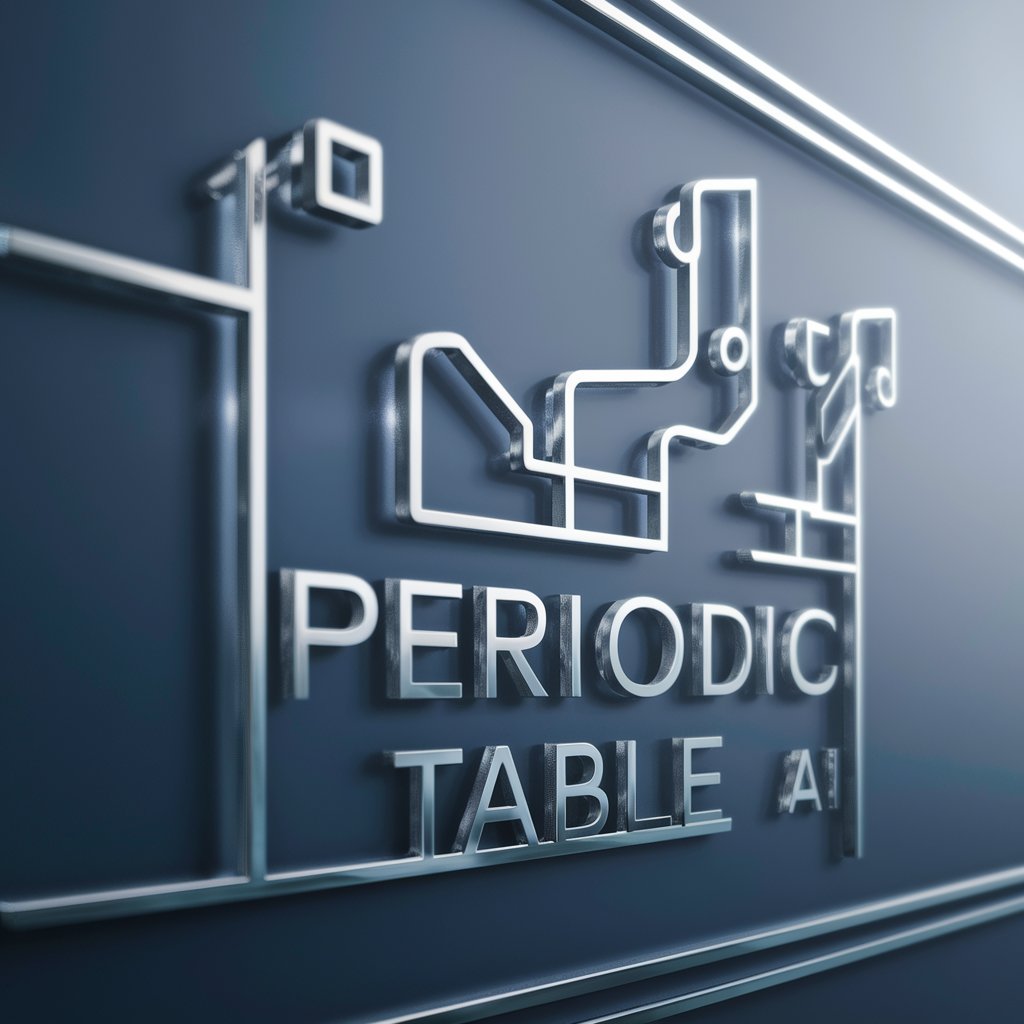
Periodic Table - Comprehensive Chemistry Assistant

Hello! Ask me anything about the periodic table.
Decoding Elements with AI
Explain the significance of the periodic table in chemistry.
What are the properties of the element carbon?
Describe the structure of an atom.
How are elements arranged in the periodic table?
Get Embed Code
Overview of the Periodic Table
The Periodic Table of Elements organizes all known chemical elements in a tabular format, highlighting their properties and how they relate to each other. Designed by Dmitri Mendeleev in 1869, it has become a foundational tool in chemistry. The table arranges elements in rows called periods and columns known as groups or families, based on increasing atomic number and recurring chemical properties. This systematic layout helps predict the characteristics and behaviors of elements. For example, elements in the same group typically have similar properties and react similarly with other substances, which is crucial in predicting outcomes in chemical reactions. Powered by ChatGPT-4o。

Key Functions of the Periodic Table
Predicting Element Properties
Example
Elements in group 1, the alkali metals, share characteristics like high reactivity and the formation of +1 ions. Sodium (Na) and potassium (K) both react vigorously with water, a property predictable by their placement in the table.
Scenario
In a high school chemistry class, a teacher explains why potassium reacts more violently with water than sodium does, using the concept of atomic radius available from the table.
Facilitating Chemical Equation Balancing
Example
Understanding the common oxidation states and valences of elements, like +2 for magnesium (Mg) and -2 for oxygen (O), helps in balancing chemical equations such as the formation of magnesium oxide (MgO).
Scenario
A chemist uses the periodic table to quickly deduce the correct formula for magnesium oxide and subsequently balances the chemical equation for its synthesis from elemental magnesium and oxygen.
Guiding Synthesis and Analysis of Compounds
Example
The halogens (Group 17), known for being good oxidizing agents, are often used in organic chemistry reactions, such as in the synthesis of alkyl halides.
Scenario
An organic chemist plans a synthesis pathway for an alkyl halide and chooses iodine from the halogen group, due to its reactivity profile as indicated in the periodic table.
Who Benefits Most from the Periodic Table
Students and Educators
Students across all levels of chemistry education use the Periodic Table to understand fundamental concepts of chemical behavior and properties. Educators rely on it to teach these concepts systematically.
Researchers and Chemists
Professionals in chemical research and development use the table as a critical reference for predicting reactions, understanding element compatibility, and exploring new compounds.
Industrial Applications
Engineers and industrial chemists use the periodic table in applications ranging from pharmaceuticals to manufacturing, where knowledge of element properties is crucial for material selection and process planning.

How to Use the Periodic Table GPT
Begin your journey
Start by visiting yeschat.ai for a free trial, no login required, and no need for ChatGPT Plus.
Familiarize with elements
Explore the layout of the periodic table, noting the arrangement of elements by atomic number, groups (columns), and periods (rows).
Identify element properties
Use the table to discover properties of elements such as atomic mass, electron configuration, and chemical reactivity.
Explore interactions
Learn about how elements interact with each other, understanding bonds, compounds, and their applications.
Apply knowledge
Utilize the table for practical applications like solving chemistry problems, predicting chemical reactions, and understanding material properties.
Try other advanced and practical GPTs
愛餐廳 (AI Restaurant Pro)
Elevate Your Dining with AI Expertise

Historiador Imperial (História do Brasil)
Dive into Brazil's past with AI-powered insights

rReddit Engagement Specialist
Elevate your Reddit experience with AI-powered engagement.

SEO Dynamo
AI-powered SEO Enhancement

Ultimate SEO Article Writer
Empower Your Content with AI

Gooogle SEO Expert
Empowering SEO with AI Technology

FunnelArtisan AI | Funnel content generator
Engineer Your Success with AI-Driven Marketing

AI Content Generator - by Fris Online
Empowering content creation with AI

Best SEO CustomGPT - AI SEO Content Generator
Elevate Your SEO with AI-Powered Content

Cash Cow Channels Perfect Script Generator
Elevate Your YouTube Presence with AI

Code Guardian
Empowering Secure Coding with AI

NVDA Expert
Decoding NVIDIA's Financial Complexity

Detailed Q&A About Periodic Table GPT
What is the Periodic Table?
The Periodic Table is a tabular arrangement of chemical elements, organized by atomic number, electron configuration, and recurring chemical properties. Its structure helps predict the properties of elements and the relations between them.
How are elements grouped in the Periodic Table?
Elements are grouped into rows called periods and columns known as groups or families. Groups contain elements with similar chemical properties and valence electron configurations.
What is the significance of atomic numbers in the Periodic Table?
The atomic number of an element represents the number of protons in its nucleus and uniquely identifies the element. It also indicates the number of electrons in a neutral atom, influencing the element's chemical behavior.
How does the Periodic Table help in predicting reactions?
The table predicts chemical reactions by providing insights into elements' reactivities based on their position. For example, alkali metals in group 1 react vigorously with water, producing hydrogen gas and alkali hydroxides.
What are transition metals, and where are they located?
Transition metals are elements found in groups 3 through 12 of the Periodic Table. They are characterized by their ability to form various oxidation states and are crucial for catalysis and the formation of colored compounds.